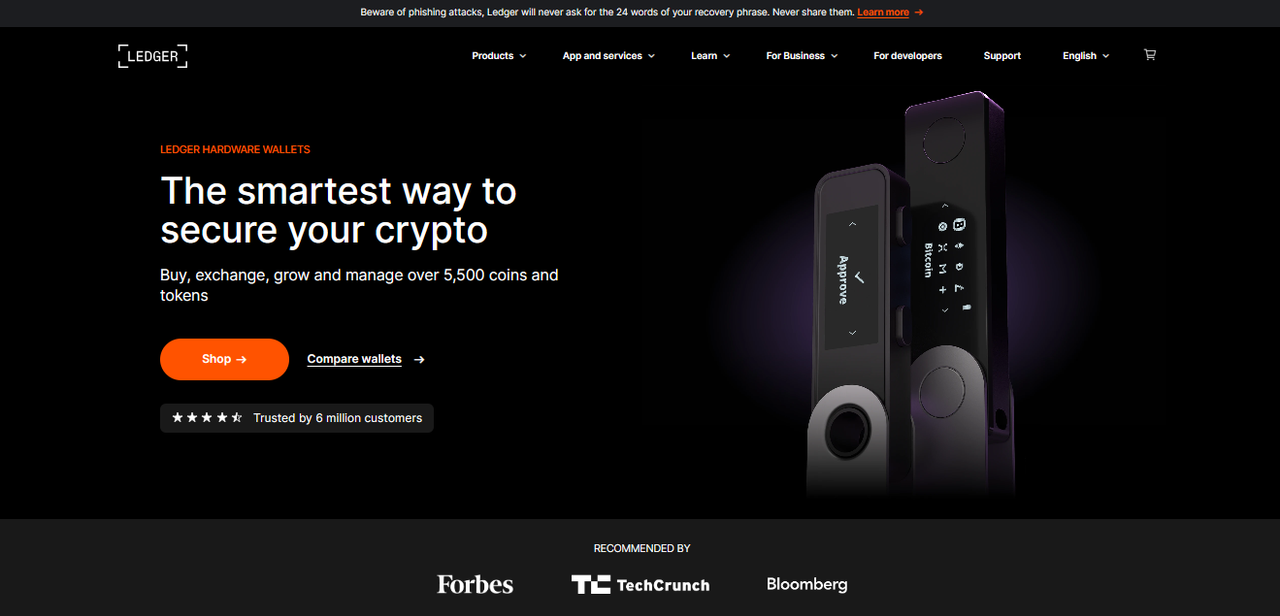Ledger.com/Start — Official Setup & Secure Onboarding
This detailed guide walks you through Ledger.com/start — the official first step to safely set up your Ledger device, install Ledger Live, initialize your wallet, and adopt strong security practices to protect your cryptocurrency assets.

Why use Ledger.com/start?
When you buy a Ledger hardware wallet (Nano S Plus, Nano X, or Stax), Ledger.com/start is the single safest place to begin. It consolidates verified downloads, step-by-step onboarding, and official security advice. Using this page prevents you from falling for fake installers, phishing landing pages, and compromised software that could expose your recovery phrase or private keys.
ledger.com/start manually into your browser or use a bookmark — avoid search ads and third-party links during setup.Before you begin
Gather these items before you start: your new Ledger device, the USB cable included in the box, a pen and the recovery card, and a computer or mobile device with internet access. Do this in a private, secure location — public Wi‑Fi or a shared computer increases risk.
Step 1 — Visit Ledger.com/start and download Ledger Live
The first action on Ledger.com/start is to download the official Ledger Live app. Ledger Live is available for desktop (Windows, macOS, Linux) and mobile (iOS and Android). Click the correct version for your platform and, if possible, verify the file signature to confirm authenticity.
- Open ledger.com/start and choose your device model.
- Select the Ledger Live download for your operating system.
- Save the installer and check the publisher information. On desktop, you can verify checksums if Ledger provides them.
- Install Ledger Live and launch the application.
Security reminder
Fake installers and malicious websites are common. Never install Ledger Live from third-party sources. If a link arrives via email or social media, do not click it — go to Ledger.com/start directly.
Step 2 — Unbox, inspect, and connect your Ledger
Inspect the packaging for tampering. Ledger devices are shipped sealed. Open the box and avoid using a device that appears to have been altered or includes pre-written recovery information. Connect the Ledger to your computer using the supplied cable — some models may use Bluetooth for mobile setups (Nano X).
Step 3 — Initialize your device in Ledger Live
Ledger Live will guide you through initialization. You have two choices: create a brand-new wallet (recommended for new users) or restore an existing wallet from a recovery phrase.
- Create new wallet: The device will generate a 24-word recovery phrase. Write each word in order on the provided recovery card. Do not store the phrase digitally.
- Restore wallet: Use your existing 24-word phrase to restore access to funds on a new device. Enter the words only using the device screen when prompted.
After seed generation or restoration, set a PIN on the device. The PIN is required every time you connect the Ledger and protects against unauthorized physical access.
Step 4 — Add accounts and manage assets
Once your device is initialized and unlocked, add accounts for the cryptocurrencies you want to manage (Bitcoin, Ethereum, Solana, etc.). Ledger Live will display balances, recent transactions, and portfolio value.
- In Ledger Live, choose Add Account and pick the coin.
- Open the corresponding app on your Ledger device when prompted.
- Verify addresses and details on the device screen before sharing receive addresses or approving transactions.
Step 5 — Sending and receiving securely
When you send crypto, Ledger Live builds the transaction but your device signs it. Always verify both the recipient address and the amount on the physical device. This prevents address substitution attacks where malware alters the destination address shown in the app.
For receiving, generate a new address in Ledger Live and confirm it on the device before sharing it with others.
Advanced security options
Ledger supports optional passphrases, which create hidden wallets derived from your seed phrase plus an extra secret. Use passphrases only if you understand the risks — losing the passphrase means losing access to those funds.
Consider using a metal backup for your recovery phrase to protect against fire, water, and physical damage.
Firmware and updates
Keep Ledger Live and your device firmware up to date. Ledger Live notifies you when updates are available; follow on-screen instructions and avoid interrupting the update process. Firmware updates patch vulnerabilities and add new features — skipping them exposes you to unnecessary risk.
Troubleshooting common issues
- Device not detected: Try a different USB cable or port and ensure Ledger Live has permission to access the device.
- Recovery restore problems: Double-check word spelling and order; some words are similar—accuracy matters.
- Firmware update failed: Reconnect the device, restart Ledger Live, and retry. If problems persist, consult Ledger support.
Privacy and best practices
Blockchain transactions are public. To improve privacy, avoid address reuse, use separate accounts for different purposes, and consider privacy-focused coins if they meet your needs and legal requirements. Always verify third‑party services before connecting them to your Ledger device.
Conclusion
Ledger.com/start is the trusted starting point for new Ledger users. By following the steps above — downloading Ledger Live from the official site, initializing your device carefully, securing your recovery phrase offline, and verifying transactions on-device — you significantly reduce the risk of theft or accidental loss. Ledger hardware wallets combined with the official Ledger Live app provide a robust, user-friendly approach to long-term crypto security.
Begin your secure setup now at Ledger.com/start.